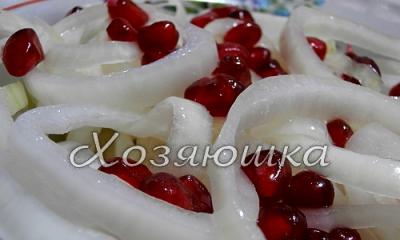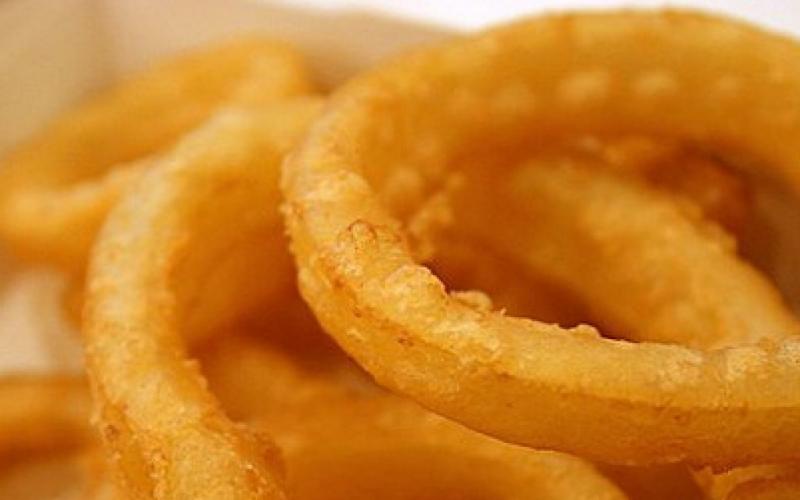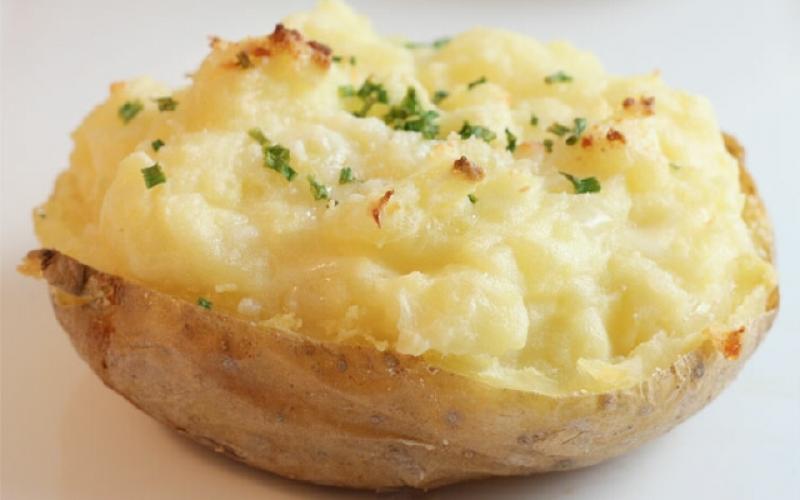The possibility of placing the base of the Pacific Fleet on the island of Matua in the Kuril chain increases the military presence on Sakhalin. Measures to strengthen our presence in the department are called "unprecedented."
Few people know, but in 2012 Japan decided to change its military doctrine and turn its purely “peaceful” self-defense forces into an army, giving it an offensive character. Including for this, formations of marines are being created.
In the light of such events, we propose to take a closer look at and to their maritime segment.
War concept
If Russia, by the will of the ancient emperors, spread out in a natural fortress, then fate prepared for Japan to gain a foothold in a natural outpost, which is difficult to capture, but from which there is nowhere to retreat.
The Japanese ground forces are the last line of defense. They are lined up accordingly: the infantry is motorized, but not mechanized, the infantry divisions are barely diluted with tank squadrons. There is only one tank division in the whole country, one mechanized infantry division with infantry fighting vehicles and armored personnel carriers and one artillery brigade - this is the shock fist of the Japanese army, designed to throw out the enemy landing troops from the islands.
The landing that will survive after meeting with the Japanese fleet.
It is on the fleet that the main task of protecting the Land of the Rising Sun falls. And since 2012 - and the protection of its interests in the disputed territory.
Fleet Composition
Serves in the Navy 44.5 thousand people.
The Japanese build their ships at domestic shipyards, but they put weapons mainly of foreign production, mainly American. In cases where it is possible, they prefer not to purchase ready-made copies, but to organize their own production under license.
In this regard, the weapons on the ships are of the same type, corresponding to the era.
The American art complex is almost always used as anti-aircraft artillery. Mark 15 Phalanx CIWS or, more simply, " Phalanx". This is a 20-millimeter six-barreled automatic cannon capable of firing 1,500 100-gram bullets into the sky in 30 seconds. Two radars go to her aid. The complex was developed in the 1970s.
Anti-aircraft missile weapons
Anti-aircraft missile system ASMD. Actually, this is a carriage standing on the outer deck, or vertical modules hidden below the deck. In the first case - 21 launch containers, in the second - five cells per module. But the main thing is cruise missiles RIM-116A, capable of intercepting a target at a distance of 500 meters to 10 km and at an altitude of 4 meters. Development of the 70s.
Medium-range anti-aircraft missile RIM-162ESSM with a semi-active homing head. The maximum range is about 50 km, and the flight speed is more than Mach 4. Used with MK.41 TLU, 4 missiles per launch cell. Adopted in the United States in 2004.
short-range anti-aircraft guided cruise missile RIM-7 "Sea Sparrow". Developed back in the 60s, the key word in talking about this rocket is manually controlled.
Medium-range anti-aircraft guided missile Standard RGM-66 with a passive aiming head. More like museum pieces, these 1960s rockets sit on old Japanese ships. On the new ones are the following series of missiles - "Standard 2", a little less ancient stuff, but now with an inertial autopilot.
Vertical launcher Mk 41- a universal thing. It is installed below deck in containers, and its cells carry a variety of missiles.
Anti-submarine weapons
anti-submarine missiles RUM-139. They are placed in the TLU Mk 41. The principle of the device is simple: fired - the rocket went into autonomous flight, cut down the engines at a given distance and dropped a torpedo by parachute. The torpedo splashed down, turned on the engines and went to ram the enemy. The maximum range is 28 km, developed in the 80s.
anti-ship weapons
Anti-ship cruise missile RGM-84 Harpoon. Ceiling - from 2 to 900 meters in height and 850 km / h speed, carries a high-explosive fragmentation warhead weighing 221 kg. Developed back in the 70s.
anti-ship missile "Type 90". Japanese alternative to the Harpoon, adopted in 1992.
The pride of the Japanese fleet is a destroyer-helicopter carrier of the type "Izumo" off the stocks in 2015. 248 meters of steel in length and 27 thousand tons of displacement. 14 helicopters, two powerful Phalanx units and two ASMD units. Electronic warfare system, radar. Instead of helicopters, the ship can carry 400 troops along with 50 vehicles up to 3 tons.
The Japanese can be cunning as much as they like, calling this ship a destroyer-helicopter carrier, but it is obvious to everyone that this light aircraft carrier is a symbol of the revival of the Japanese fleet.
And in 2017, another one of these will be completed, but according to rumors, with the ability to carry the F-35 Lightning II and the MV-22 Osprey convertiplanes. You can’t be sure about the planes, but they really planned to buy convertiplanes for the emerging units of the Marine Corps.
 Photo: internet
Photo: internet
Two destroyer-helicopter carriers of the Hyuga type, manufactured in 2009 and 2011. 13,950 tons of displacement and a crew of 360 people.
12.7 mm machine gun, two Phalanx anti-aircraft gun mounts, sixteen RIM-162 anti-aircraft and twelve RUM-139 anti-submarine gun mounts in the TLU Mk 41. Two installations of three 324-mm torpedo tubes. Eleven helicopters. Electronic warfare system, radar.
These guys can take care of themselves.
 Photo: internet
Photo: internet
Shirane-class destroyer launched in 1981. Displacement - 5200 tons. 159 meters long.
Two 127 mm guns. Armed with eight anti-submarine RUR-5 ASROK and two installations of three 324-mm torpedo tubes. It is protected by eight Sea Sparrow missiles, Phalanx anti-aircraft gun mounts.
Carries three helicopters. The younger brother for a year from the same series was written off back in 2014, how much is left for this is unknown.
 Photo: internet
Photo: internet
Guided missile destroyers are represented by three series:
- Two destroyers of the "Hatakaze" type built in the 80s and with a displacement of 4600 tons. They still have the same two 127-mm guns, two Phalanx installations. Armed with anti-ship "Harpoons" and anti-submarine ASROK, eight pieces each. Naturally, two torpedo launchers for 3 vehicles. They defend themselves, if you can call it that, with anti-aircraft missiles « Standard" in the amount of 40 pieces. They have one helipad. Electronic warfare equipment was not found.
- Four destroyers of the Congo type built in the 90s and with a displacement of 7250 tons. Everything is the same, but due to the fact that the boat is bigger, it was possible to stick as many as two TLU Mk 41s into it - one at the bow with 29 cells and one at the stern with 61 cells. They already have Standard 2 anti-aircraft missiles (instead of Standard) and ASROK anti-submarine missiles. Electronic warfare equipment was also not found.
- Two Atago-class destroyers built in the 2000s with a displacement of 7750 tons. Here, instead of the Harpoons, there are Japanese Type 90s. Also, new HOS 302 torpedo tubes were installed, the gun was left alone, but the barrel was lengthened. Plus, stealth technologies have been implemented, but there are still no means of electronic warfare. In addition to the heliport, a helicopter hangar has also been built.
 Photo: internet
Photo: internet
Destroyers of smaller displacement, up to 5 tons, are represented by five series. A total of 29 warships built from 1985 to 2014.
In fact, the same biting devils as "Atago" and "Kongo", only small.
Accordingly, on the old series there are 8 Harpoon launchers, and in the younger series - one TLU Mk 41 for a maximum of 32 cells. They contain anti-aircraft ESSMs and the same anti-ship "Type 90".
Photo: internet
Six Abukuma-class frigates built from 1989 to 1993. Displacement 2 thousand tons. Armed with one 76.2 mm universal gun mount from OTO Melara and one very familiar Phalanx anti-aircraft gun mount. Plus eight Harpoon launchers, and six torpedoes.
Seventeen combat submarines of two series: Oyashio and Soryu.
- Eleven multi-purpose submarines "Oyashio" were built from 1994 to 2008. Underwater displacement of 3 thousand tons. They are powered by two air-independent diesel-electric engines. Armed with six 533-mm torpedo tubes. There are either 20 torpedoes on board, or the notorious Harpoon missiles, only now submarine-based.
- Seven multi-purpose Soryu submarines have been built since 2005. At least four more submarines are planned. They differ from the previous series by an increased displacement - 4,200 tons in a submerged position, the presence of 30 torpedoes or missiles, and four Stirling engines installed instead of two conventional electric generators.
In addition, there are various support ships, in the amount of 11 pieces, including five landing ships.
- Seven missile boats;
- Eight landing craft;
- Twenty-five minesweepers;
- Auxiliary ships.
Is it a strong fleet?
Compared to the ground forces, the Japanese fleet makes a much more spectacular impression. This is a well-thought-out and balanced tool, tailored to local conditions, which is definitely a plus for Japanese generals. It is better to bet more on someone who, having a smaller fleet, knows how to use it, than on mediocrity, standing at the head of even the largest squadron.
However, let's take a look.
Although Japanese helicopter carriers are increasing in size, losing their accompanying weapons, they are not yet aircraft carriers.
Their scope is the fight against submarines. Taking off helicopters crawl for tens of kilometers around, sanitizing the water column in search of hidden submarines. Having found it, they drop torpedoes or depth charges. The beauty is that the submarine has nothing to answer, from there, from the depths, and the helicopter carrier itself remains outside the reach of its torpedoes.
At the same time, if the new Izumo has only anti-aircraft weapons, then both ships of the Hyuga type have anti-submarine missiles and even torpedo tubes. A very reasonable tactic, given that the North Korean submarine fleet has a hundred units.
These ships are fully equipped to fight submarines or support marines.
Four destroyers of the Congo type and two destroyers of the Atago type, among a variety of weapons, also carry anti-ship missiles, but only on the Atago these are not the ancient Harpoons, but the Type 90, which was put into service in 1990.
Of the 29 small destroyers, only 18 are modern ships, the rest are two series, one of which has already been almost completely written off, and the other, Asagiri, is being prepared for decommissioning.
All other ships approach the title of "old trough".
And the Japanese understand this, promptly decommissioning old and inefficient ships and launching a series of new ones.
The Chinese fleet, compared with the Japanese, gives the impression of a Chinese bazaar, but the number of ships still dominates. There are already 12 destroyers built in the new century with a displacement of more than 6 thousand tons, and two more are undergoing sea trials. A variety of frigates - 43 pieces, most of which went to the water no later than the 90s.
The Japanese submarine fleet is also seriously inferior to the Chinese.
Comparing the Japanese Naval Self-Defense Forces with the Russian Navy is an interesting task, but for a separate article. However, you know its capabilities ...
The Japanese fleet is often called the second in the Pacific region, perhaps it is. But only after American, Russian and Chinese.
The Japanese fleet is a successful instrument for the defense of the island nation, but nothing more.
 Photo: Missile cruiser Varyag
Photo: Missile cruiser Varyag
 Photo: Missile submarine cruiser "Vladimir Monomakh"
Photo: Missile submarine cruiser "Vladimir Monomakh"
The birth date of the Imperial Japanese Navy is considered to be June 1869, when, after the end of the civil war, all the ships captured from the shogunists and received by the emperor from clans loyal to him were assembled under a single command. The fleet consisted of the armored ram "Kotetsu" (later "Azuma") of French construction, bought in the USA in 1867, the gunboat "Chiodogata", the corvette "Yoshun", four wheeled and four sailing ships. A year later, they were joined by the Ryuzo armored corvette, built in Scotland for the American Navy. southern states and bought by the Japanese prince Hizen. But it wasn't until 1875, when it was decided to build a modern navy under the influence of difficult relations with Korea, that Japan adopted the first shipbuilding program. Due to the weakness of their industry, orders for the construction of large ships (the casemate battleship Fuso, the armored corvettes Kongo and Hiei) and 4 destroyers (in 1879) were issued to British firms.Small ships with wooden hulls began to build a military shipyard in Yokosuka, which was led by French experts.
In 1882, Japan was able to adopt a more extensive 8-year program that included the construction of 46 warships, the construction of shipyards and factories, the training of officers, sailors and technical staff of the fleet. Since then the French "Young School" was popular in the leadership of the fleet, denying the importance of battleships in naval warfare, only cruisers, gunboats and destroyers were built under this program: 14 ships, including two cruisers, - in Japan, the rest - in England and France. However, the aggravation of Sino-Japanese relations in the early 1890s forced Japan to order two powerful battleships from England to counter China's.
When the Sino-Japanese war began in 1894, not all new ships managed to enter service. Nevertheless, the Japanese fleet, which was based on fast cruisers with rapid-fire artillery, managed to defeat the strongest, but poorly prepared enemy. Combat experience allowed the Japanese to draw two very important conclusions: the need for good armor for ships intended for squadron combat; and about the usefulness in such a battle of a fast detachment with sufficiently powerful weapons and protection. Based on these conclusions, Japan began to build up its naval forces when a new, more dangerous rival, Russia, appeared on the horizon.
Although Japan won the war with China, under pressure from Russia, supported by Germany and France, she had to take a modest position in peace negotiations, having lost most of her claims. But, having received indemnity and Anglo-American loans, the Japanese immediately began to prepare for a new war, this time with the "Great Northern Neighbor".
Despite the absence of combat losses, the receipt of several Chinese ships and the completion of all ordered before the war, the fleet of the "Land of the Rising Sun" in 1895 was inferior to the Russian one, which also had large reserves in the Baltic and the Black Sea. Therefore, the shipbuilding program of 1896, designed for 10 years, included 4 even more powerful battleships, 6 armored turrets and 6 armored cruisers, 23 fighters and 63 destroyers. All large ships (except 3 armored cruisers), 16 fighters and most of the destroyers were built abroad, taking into account the latest achievements of naval technology, and, in general, the program was completed ahead of schedule. Russia's retaliatory steps forced Japan in 1903 to order an additional 3 battleships and armored cruisers, as well as 2 armored. But at the beginning of 1904, given that the Russian program of 1898 was still far from being fulfilled, the Japanese decided to go to war without waiting for the readiness of these last ships. As an emergency measure, they, however, managed to buy in Italy two armored cruisers built for Argentina, further increasing their advantage over the Russian Pacific squadron based at Port Arthur and Vladivostok.
Note: the text of the section is published on the basis of the book: S. Suliga Ships Russian - Japanese war 1904-1905 Part 2. Japanese fleet
|
Photo archives |
||
On October 23-26, 1944, in Leyte Gulf, the Japanese fleet suffered a crushing defeat from American squadrons, and the countdown to the final defeat of the empire began. In the photo - the battleship "Yamato" under the bombing of US aircraft, October 24, 1944
 After the battle in Leyte Gulf, the Japanese fleet conducted only tactical operations. During one of them, the battleship Yamato was hit by 227 aircraft of the US Navy, received 3 bombs and up to 20 torpedo hits and exploded. A column of fire shot up 2 kilometers up, and a smoky mushroom 6 kilometers high was a little inferior to the atomic one. In the photo - the explosion of the battleship "Yamato", April 7, 1945
After the battle in Leyte Gulf, the Japanese fleet conducted only tactical operations. During one of them, the battleship Yamato was hit by 227 aircraft of the US Navy, received 3 bombs and up to 20 torpedo hits and exploded. A column of fire shot up 2 kilometers up, and a smoky mushroom 6 kilometers high was a little inferior to the atomic one. In the photo - the explosion of the battleship "Yamato", April 7, 1945
 The last campaign of the Yamato also marked the end of Japan's organized actions at sea. After that, the Japanese ships were finished off where they hit the sight. On the picture - battle cruiser"Haruna", sunk in the harbor of Kure, October 1945
The last campaign of the Yamato also marked the end of Japan's organized actions at sea. After that, the Japanese ships were finished off where they hit the sight. On the picture - battle cruiser"Haruna", sunk in the harbor of Kure, October 1945
Source: U.S. Naval Historical Center
 light cruiser"Oedo", lying on its side in the waters of the naval base in Kure. The photo was taken from the USS Wasp. Oedo sank on July 28, 1945 after eight bomb hits.
light cruiser"Oedo", lying on its side in the waters of the naval base in Kure. The photo was taken from the USS Wasp. Oedo sank on July 28, 1945 after eight bomb hits.
 And yet the war, which no longer had a strategic meaning, continued. Western historians are perplexed by the desperate determination of the Japanese to fight to the last man, to the last aircraft and ship. In the photo - the battlecruiser "Haruna" in a military campaign
And yet the war, which no longer had a strategic meaning, continued. Western historians are perplexed by the desperate determination of the Japanese to fight to the last man, to the last aircraft and ship. In the photo - the battlecruiser "Haruna" in a military campaign
 Until the emperor canceled the order to fight, Japan fought. When he ordered to lay down their arms, the nation obeyed, despite a record number of military suicides. In the photo - the battleship "Ise" in a military campaign
Until the emperor canceled the order to fight, Japan fought. When he ordered to lay down their arms, the nation obeyed, despite a record number of military suicides. In the photo - the battleship "Ise" in a military campaign
Source: Kure Maritime Museum
 The heavy cruiser Tone sank near Hiroshima on July 23, 1945.
The heavy cruiser Tone sank near Hiroshima on July 23, 1945.
Source: U.S. Naval Historical Center
 The destroyer "Akisimo", which died in the harbor of Manila under US air strikes on November 13, 1944
The destroyer "Akisimo", which died in the harbor of Manila under US air strikes on November 13, 1944
 Escort aircraft carrier Kayo in Beppu Bay. Destroyed by B-25 Mitchell bombers from the aircraft carrier Tikanderoga on July 24, 1945
Escort aircraft carrier Kayo in Beppu Bay. Destroyed by B-25 Mitchell bombers from the aircraft carrier Tikanderoga on July 24, 1945
Source: U.S. Naval Historical Center
 Aircraft carrier Amagi. Attacked during a raid on Kura on July 28, 1945, sank on July 29
Aircraft carrier Amagi. Attacked during a raid on Kura on July 28, 1945, sank on July 29
Source: U.S. Naval Historical Center
 Aircraft carrier "Amagi" in the woods before dismantling for metal. June 1, 1946
Aircraft carrier "Amagi" in the woods before dismantling for metal. June 1, 1946
Source: U.S. Naval Historical Center
 Battleship "Nagato" on the roads of Yokosuka. It was captured by the Americans as a trophy and sent to the Bikini Atoll to participate in nuclear weapons testing - an underwater explosion as part of Operation Crossroad (Crossroads). Photo 1946
Battleship "Nagato" on the roads of Yokosuka. It was captured by the Americans as a trophy and sent to the Bikini Atoll to participate in nuclear weapons testing - an underwater explosion as part of Operation Crossroad (Crossroads). Photo 1946
Source: U.S. Naval Historical Center
 Explosion of 40 kiloton atomic bomb at a depth of 27 meters off Bikini Atoll. At the foot of the water "mushroom" silhouettes of ships are visible. Even the Yamato did not die so spectacularly
Explosion of 40 kiloton atomic bomb at a depth of 27 meters off Bikini Atoll. At the foot of the water "mushroom" silhouettes of ships are visible. Even the Yamato did not die so spectacularly
Japan is a key player in the Pacific theater
Flag of the Japanese Navy
The Japanese Navy on the Sunday before last, off the island of Okinawa, discovered two warships of the PRC, bound for Pacific Ocean. The ships were in international waters, but their proximity to Okinawa, where American and Japanese troops are stationed, worried Tokyo. Traditionally, the fleets of states inform neighboring states in advance about the courses of their ships, especially if the ships must pass in close proximity to the borders of these states.
This is not the first time the Chinese Navy has broken with tradition. Three months earlier, two Japanese warships while on patrol off the coast of Okinawa spotted a flotilla of Chinese ships, including two submarines. Then a Chinese helicopter flew around the Japanese ship, which forced Tokyo to make an official protest.
Because of these and other incidents, the PRC enjoys a reputation as a maritime aggressor in a region where no neighbor dares to contradict it. Nobody, except, perhaps, Japan, which is gradually building up its naval power. Despite the rapid development of the Chinese fleet, the US and Japanese navies still dominate the Pacific region. According to the course of the ruling Democratic Party of Japan, this advantage should be maintained.
Japanese Navy
The Japan Maritime Self-Defense Force has about 100 warships of the main classes, including 2 helicopter carriers, 18 submarines, 47 destroyers and frigates, 29 mine-sweeping, 9 patrol and 9 landing ships with a total displacement of 432,000 tons; about 180 aircraft and 140 helicopters. Personnel fleet - 46,000 people.In recent decades, the PRC has focused on the construction of large displacement warships, which are replacing hundreds of coastal patrol vessels. These destroyers, frigates and landing craft can operate far from the coast. In addition, China is working on the former Soviet aircraft carrier Varyag, developing the DF-21 ballistic anti-ship missile and developing a satellite system.
Undoubtedly, China wants to be able to display its flag anywhere in the world. Another goal of the PRC is a show of force in the border waters. But Beijing is not alone in pursuing a defensive strategy. Today's Japan is testing supersonic anti-ship missiles that could well target Chinese ships. The island state has at its disposal the most modern non-nuclear submarines, which pose a danger to surface ships and submarines of China. In addition, Japan announces the expansion of intelligence capabilities.
"China is developing means to keep the US out of the region, but Japan is doing the same to China," said Eric Wertheim, an independent military analyst and author of the popular book The World's Battle Fleets.
Generally speaking, instability in the Pacific region poses a threat not only to the navies of the United States and China, but to the navies of all states in general. According to Jim Thomas, an analyst with the Washington-based Center for a New American Security, the world is entering "an era that has come after the era of military power projection." The naval strategies of states take on a defensive character. And, despite the terrifying military potential of the PRC, in this light, Japan looks more profitable. According to Wertheim, "the strategy of avoidance is more characteristic of Japan, the Japanese Navy is a more flexible and mobile force."
This is evidenced at least by the fact that the Japanese Navy managed to detect Chinese ships last Sunday and in April. Submarines, aircraft, satellites and surface ships of Japan are ready to track the movements of the Chinese Navy in order to transmit guidance data to Japanese or American units.
But Japan is ready not only to defend itself. The country has the potential to break through Chinese defenses, including intercepting DF-21 missiles. The latest Japanese Kongo-class destroyers, some of the most powerful and advanced ships in Asia, are equipped with radar and interceptor missiles capable of eliminating the threat of a ballistic missile attack. The Kongo provide missile defense for the Japanese islands, but "these anti-missile capabilities could also be used to protect American aircraft carriers in the event of hostilities," Wertheim said.
But does Japan intend to strengthen military cooperation with the United States? Last month, Japanese Prime Minister Yukio Hatoyama announced his resignation after failing to deliver on a campaign promise to move the US military base, Futenma, outside Okinawa Prefecture. Hatoyama's successor Naoto Kan avoids touching on this issue. In the event of a crisis that could flare up due to another incident at sea, such ambiguity in relations between Japan and the United States could have a bad effect on the interaction of the armed forces of the states.
However, according to an analyst at the Washington-based Center for Strategic and International Studies, Nicholas Zhechenya, the Kahn government is moving in the right direction. "We are seeing an emphasis on the critical importance of the US-Japanese alliance in light of the Chinese threat. Any development will be carried out in a bilateral context, perhaps through a strategic dialogue between Japan and the United States in the coming months," the expert said.
Japan has always attracted close attention with its originality. With considering geographical location, great importance in this island country is attached to the development of the navy.
common data
In total, a little more than 45.5 thousand military and 3.7 thousand civilians serve in the Japanese fleet. Of these, 8,000 are part of naval aviation. 1,100 volunteers who left military service at the end of contracts or years of service. About 12,000 people work for the Maritime Safety Authority (MBS).
How small Island state, Japan has a fairly powerful fleet. The Navy, a photo of individual units of which can be seen in the article, is armed with an impressive number of ships and submarines. From the warships of the main class, squadrons are composed, based mainly on the main Yokosuka.
- The squadron with escort ships includes four flotillas, where destroyers are assigned.
- The subdivision with submarines includes 2 groups of submarines.
- The base of the two flotillas, in addition to the Yokosuka base, is also the Kure naval base.
- Flotillas engaged in the protection of coastal waters are deployed at military bases: Yokosuka, Kure, Sasebo, Maizuru and Ominato. There are only five such divisions. This includes obsolete destroyers and frigates, landing ships, combat boats, auxiliary vessels.

Recruits are trained on training ships.
The Japanese Navy today has a total of 447 units of various types of ships and submarines. These are combat and patrol ships, boats and support vessels, located, as already noted, at the main naval bases - Yokosuka, Sasebo, Kure, and auxiliary ones - Maizuru, Ominato and Hanshin.
The Japan Maritime Self-Defense Force also maintains aircraft. These are planes - 190 units, and helicopters - 140 pieces. Of these, 86 P-3C Orion patrol and anti-submarine aircraft, as well as 79 SH-60J Seahawk helicopters.
History reference
Until 1945, the Imperial Japanese Navy existed. It was disbanded when the Second World War and the Japanese islands came under the influence of occupation by the combined allied forces. Japan, whose Navy was re-established only in 1952, had the right to maintain it only as a self-defense force.

The imperial fleet of Japan, which existed since 1869, actively showed itself in the Japanese-Chinese (1894-1895), Russian-Japanese (1904-1905), the First and Second World Wars.
Before the Second World War, Japan had the most powerful carrier fleet on the planet, consisting of 9 aircraft carriers, then there were only seven of them in the North American Navy, of which four were stationed in Atlantic Ocean. Displacement Japanese battleships The Yamato class was the largest in the world. At the same time, Japan, whose Navy possessed the most modern Zero fighter for carrier-based aviation at that time, still lagged far behind the United States of America in the number of battleships and other types of ships in the fleet, except for aircraft carriers. Japan's industrial capacity was also well below that of the US. In total, in 1941, Japan was armed with 10 battleships, 9 aircraft carriers, 35 cruisers, 103 destroyers and 74 submarines. Accordingly, the American and British Air Forces and Navy were able to bring significantly more powerful forces against Japan in World War II.
Completely the process of liquidation of the Japanese Imperial Navy after the defeat in the war was completed by 1947.
The tasks of the newly created fleet
Created as part of the Japanese Self-Defense Forces Navy was intended to:
- lead fighting with ship and air groupings of the enemy in order to obtain dominant influence in the sea and ocean areas off the coast of Japan;
- to block the strait zones in the Sea of Okhotsk, the East China and the Sea of Japan;
- conduct amphibious assault operations and provide support to ground units in the coastal direction;
- protect sea communications, defend naval bases, bases, ports and coasts.
On peaceful days, the ships of the Japanese Navy guard the state territorial waters, maintain a favorable operational regime in the thousand-mile ocean zone and carry out patrol duty, together with the Maritime Security Administration.
Features of the Japanese Navy
The Japanese constitution today prohibits self-defense forces from possessing units of offensive weapons equipment (aircraft carriers, cruise missiles, etc.). At the same time, the framework established by the results of the war for the military-political elite of the country is becoming tight.

The presence of territorial disputes with such neighboring states as Russia and China provoke the Japanese to create a full-fledged one that would be equipped with all modern weapons. Of course, this fact is given maximum disguise by the Japanese leadership.
Today, the ship composition and armament of the Japanese Navy is clearly being intensively built up and updated. Modern weapons systems are being introduced, produced in North America or unified, with those in service with the US Navy.
Japan: Navy (structural composition)
The head of the Japanese naval forces is the commander, who is also the chief of staff, who has the rank of admiral.
Structurally, the Japanese Navy consists of a headquarters, a fleet, five regions, an aviation training command, as well as formations, units and institutions under central control. The location of the headquarters is an administrative complex in the capital of the state, where the command posts of other branches of the military and the Ministry of Defense are also located.
In total, the staff of the headquarters has 700 employees, of which about six hundred are officers and admirals.

The fleet consists of:
- headquarters located at the Yokosuka naval base;
- three commands - escort, underwater and aviation;
- minesweeper fleets;
- intelligence groups;
- experience-group;
- oceanographic departments;
- Special Forces Patrol Squad.
The ship fleet has a little over a hundred warships. Here is a list of some positions:
- diesel submarines - 16 pieces;
- destroyers - 44 pieces;
- frigates - 8 pcs.;
- landing ships - 7 pcs.;
- minesweepers - about 39 pcs.
The fleet is under the command of a vice admiral.
The structure of the escort forces
The escort force, under the command of a vice admiral, is led by a headquarters stationed on the territory of the naval base in Yokosuka.
He has under his command:
- flagship;
- four flotillas based at Yokosuke, Sasebo, Kure and Maizuru;
- six separate divisions of destroyers or frigates;
- units with landing ships;
- supply transports;
- ships providing combat training;
- study group.
The flotillas are led by rear admirals, who are subordinate to the respective headquarters and 4 destroyers each, united into divisions, divided into two types.
The division of the first type consists of:
- destroyer with guided weapons;
- two conventional destroyers.
The second type includes three ordinary destroyers and one with a guided missile charge.
In separate divisions there are from two to five courts. The location of the ships that are part of the frigate (destroyer) unit is one of the naval bases.
Vessels included in the transport supply division are allowed to be deployed at various bases.
Separate groups of landing ships are equipped with Osumi helicopter docks, which are located at the Kure base. In addition, each division includes six boats with an air cushion and designed for landing.
AT study group includes a headquarters located in Yokosuka, and five training detachments disbanded at various bases.
The composition of the submarine forces
The commander of the submarine forces has the rank of vice admiral and is in charge of the following military units:
- headquarters at Yokosuke base;
- two fleets with submarines located there and at the Kure base;
- training center for submariners and a training division.
Each flotilla is under the command of a rear admiral, to whom all the military personnel at the headquarters are also subordinate, on the flagship submarine floating base ship, in two to three divisions of submarines (each includes 3-4 submarines).
The structure of aviation forces
Air Command's headquarters is Atsugi Air Base.
Structurally, it consists of the following units:
- headquarters;
- seven aviation wings;
- three separate squadrons;
- three detachments: two aircraft repair and an air traffic control detachment;
- one mobile engineering company located at Hachinohe Air Base.
The commander of the aviation forces bears the rank of vice admiral. The chief of staff and commanders of the air wings are rear admirals.

Aviation wings consist of:
- headquarters;
- four squadrons: patrol, search and rescue, anti-submarine helicopter units and;
- engineering and aviation support and supply groups;
- detachments for airfield technical support.
31st Air Wing subordinate to special squad containing In the aviation squadron there are from one to three air and technical detachments. Patrol air squadrons located in each air wing are armed with R-3C Orion base aircraft. Anti-submarine helicopter squadrons deploy SH-60 models. There are up to three squadrons with UH-60J helicopters in search and rescue squadrons.
Minesweeper flotilla structure
The minesweeper flotilla is subordinate to the commander - Rear Admiral. It consists of a headquarters, four divisions (three - basic and one - sea minesweepers), two floating bases of mine-sweeping ships and a mine-sweeping detachment. Each division includes from two to three ships.
Structure of other groups
The experience group is commanded by Rear Admiral.
The composition of the division is as follows:
- headquarters in Yokosuka;
- division of ships;
- three centers: the first - for the development and design of ships, the second - for control and communication systems, the third - a test laboratory for ship weapons with a test site in Kagoshima.
In addition to the headquarters, the anti-submarine defense center, the meteorological support group and two coastal sonar stations, the ocean group also includes ships for hydrographic research, sonar observations and cable layers.

The intelligence group includes a headquarters and three departments (for collecting operational information, conducting information and analytical activities, and reconnaissance by electronic means).
The special forces patrol unit has the following tasks:
- detain and inspect ships that violate the territorial coastal boundaries;
- fight terrorist and sabotage groups;
- carrying out reconnaissance activities and sabotage.
Japanese Navy vs Russian Navy
Many experts are trying to make a comparative analysis of Japanese and Russian fleets. This takes into account that Japan has about a hundred ships and is in second place in terms of the number of destroyers. In particular, there are two missile destroyers (10 thousand tons of displacement) and a helicopter carrier Izuto (27 thousand tons). Japan, whose Navy is peacekeeping, specializes in anti-submarine and air defense. The total displacement of the Japanese fleet is 405.8 thousand tons.
The Russian fleet with a displacement of 927,120 tons is armed with ships left over from Soviet Union. The newest destroyer is twenty years old, the oldest is fifty years old, but all submarines have been modernized and equipped with modern military equipment. Unfortunately, more than half of the ship's composition is subject to modernization and replacement.








